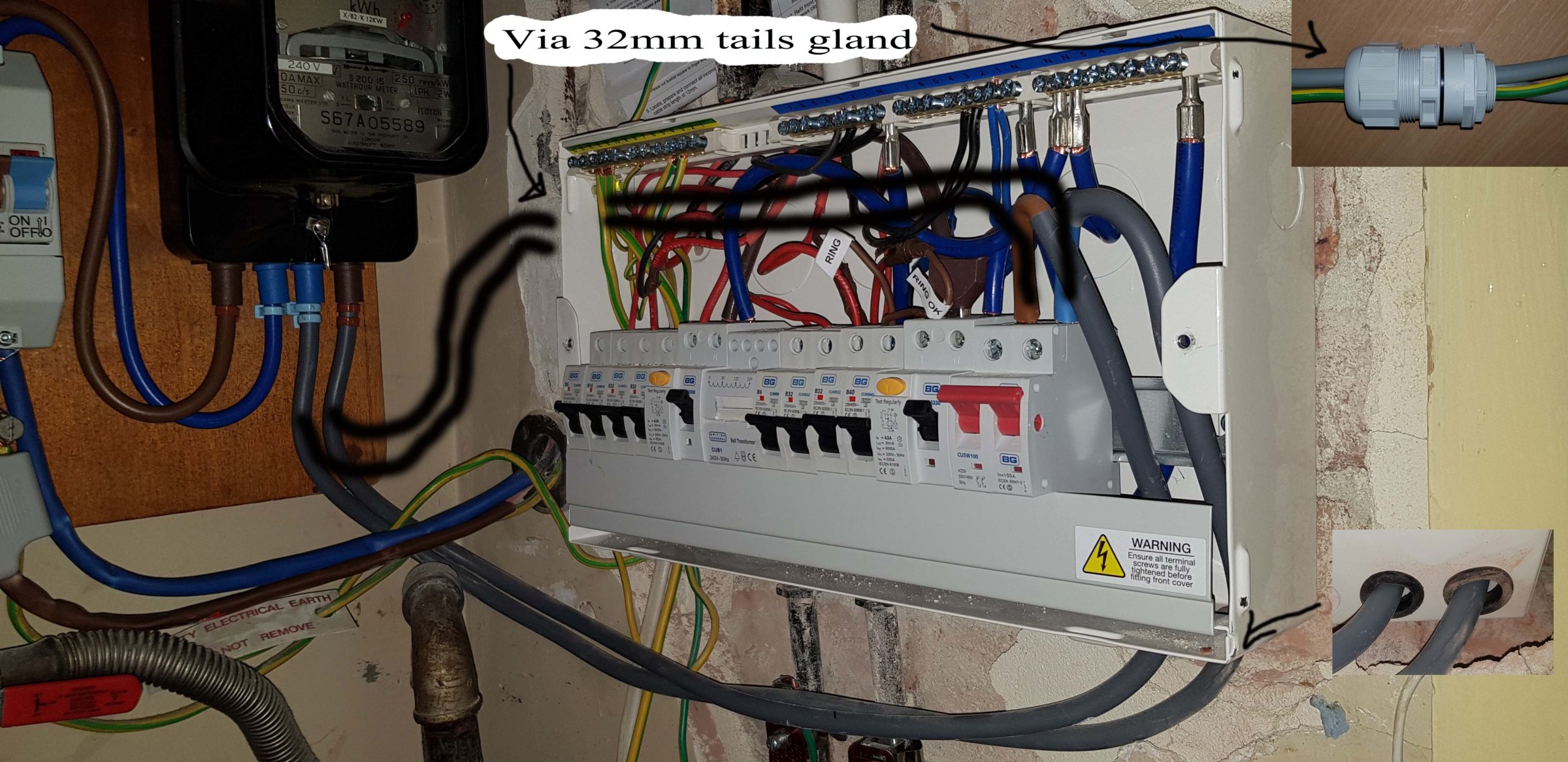I was just thinking about whether this also applies to bonding , if your MET is inside the CU. Apparently the associated CPC must also enter the same hole, but no mention of bonding. If the bonding is carrying currents (e.g. in a PME system) then I'd expect it to be entering via the same hole.
I really can't see why (when the MET is inside the CU) a main bonding conductor needs to (or should) go through the same hole as the tails. On the contrary, I can see a theoretical argument why it should
not go through
any hole in a metal enclosure at all (with or without other conductors)!
If high currents were to flow in a bonding conductor, it would presumably be from the provided earth (TN or TT) to an extraneous-c-p. That is a 'one conductor' situation, with no other conductor carrying a 'balancing return current'. Hence if it went through any hole in a metal enclosure, with or without other conductors, it would induce eddy currents in the metal - which, as I said, could be used to argue that a main bonding conductor should not go through
any hole in a metal enclosure.
With a CPC its different, at least conceptually. If there is an L-CPC fault on the circuit, then the return current is shared between N and CPC - and the N+CPC currents should then be equal to, hence 'balance out', the current in the L conductor. Of course if there is an L-E fault that does
not involve the circuit's CPC, then the L and N currents will be unequal (and CPC current zero), so there will be a 'unbalanced' current inducing eddy currents into the metal, even if L+N+CPC of the circuit all go through the same hole.
There is a similar argument for the incoming earth to go through the same hole as the tails - since, again, an L-CPC fault anywhere in the installation will result in return current being shared between the N tail and the incoming earth, theoretically with N tail+earth currents being equal to L tail current.
Having said all those theoretical things, I would not have thought that high currents in either CPCs/Earthing Conductors or Main Bonding conductors are likely to persist for long enough for the effects of eddy currents to be an appreciable concern.
Kind Regards, John


